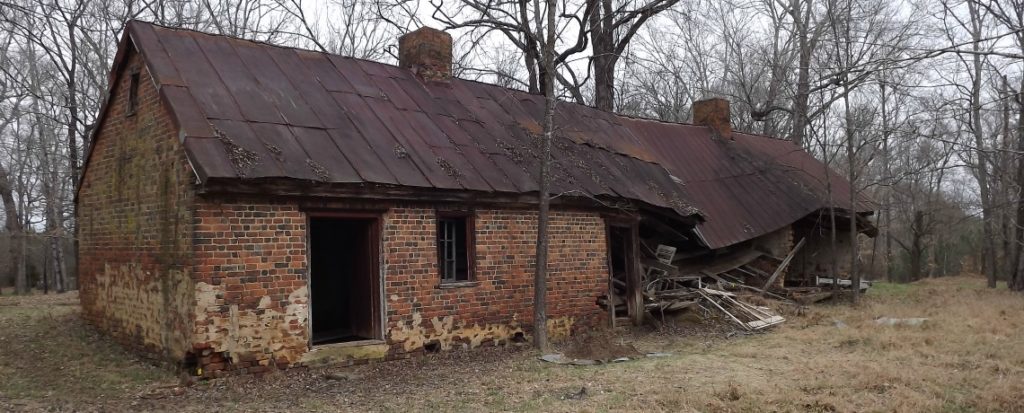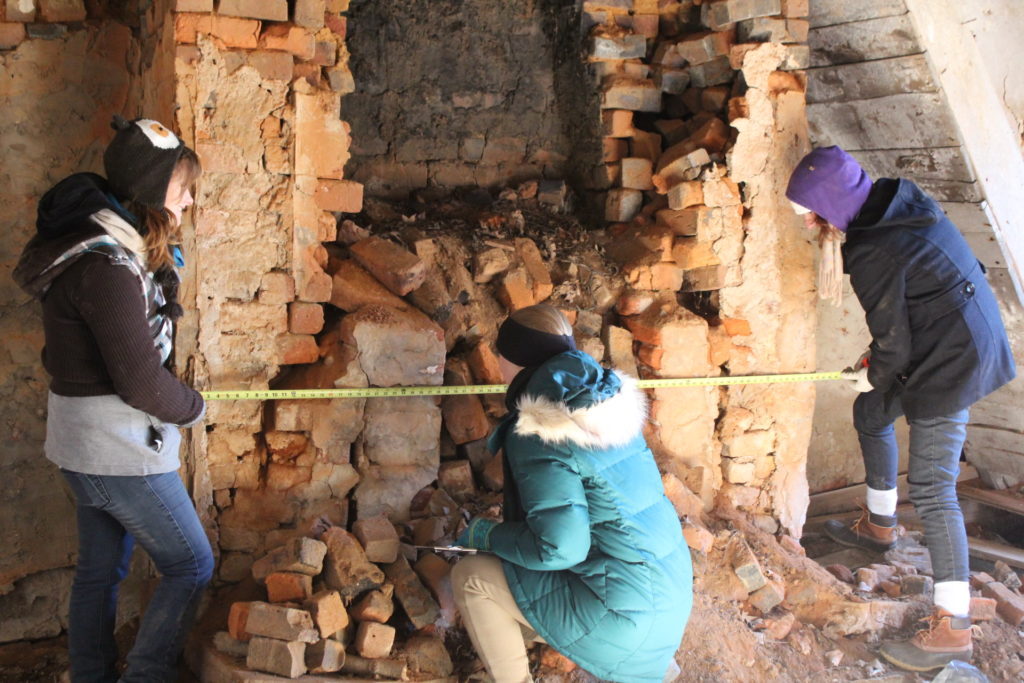Not all rundown buildings are worth saving. Crumbling walls, caved-in roofs, weedy overgrown yards. If you drive by, chances are you wouldn’t even notice them.


But nestled behind and beside neat subdivisions, retail buildings, even farmland, are the dilapidated remnants of buildings that served as the homes of farmers and plantation owners and the enslaved African Americans who worked the land. Most people wouldn’t give these structures a second thought.
University of Mary Washington Professor Doug Sanford and a group of his historic preservation students have taken notice. And their efforts earlier this year helped pave the way for preservation of the 19th-century slave dwelling at Oak Hill Plantation in Pittsylvania County.
Today, Tuesday, May 3, Preservation Virginia announced that the slave dwelling at Oak Hill has been added to the list of Virginia’s Most Endangered Historic Places for 2016. The announcement was made as part of the national observance of Historic Preservation Week.
“We were happy to cooperate with Preservation Virginia to document the Oak Hill quarters at a professionally useful level and to encourage others to help preserve these structures for the future,” said Sanford, professor of historic preservation, who nominated the site to Preservation Virginia as an endangered property.
Sanford teaches a class called Slave Housing Research. A major component of the class involved documenting surviving slave quarters in Virginia. The group studied five buildings: Oak Hill Plantation and Windsor Plantation in Pittsylvania County, near Danville; another slave quarter in Fluvanna County; another in Fauquier County; and one closer in Stafford County.
At Oak Hill Plantation, which is about 300 miles southwest of Fredericksburg, they methodically analyzed and measured the heavily deteriorated brick slave quarters on the plantation, which had been looted by relic hunters in 2015.
“This deteriorated state is a common preservation issue for many surviving, slave-related buildings,” said Sanford. “The brick quarters at Oak Hill have collapsed to a partial degree. In addition to the relic hunting that took place on the property last year, the slave buildings at Oak Hill are threatened physically and may not last for the long term, unless action is taken.
It’s a combination of good news and bad news, Sanford said. “The good news is that many more slave quarters survive than we thought several years ago. The bad news is that most of these buildings are in poor condition, and many will not survive much longer unless people take steps to preserve them.”
The preservationists’ work resulted in two important results: It provided a clearer picture of 19th-century life on Oak Hill Plantation, and it helped ensure the slave quarters will be preserved as an endangered site. Without such a designation, the buildings would have continued to disintegrate and would eventually simply disappear.
The Pittsylvania County Historical Society, the Danville Historical Society and members of the Hairston family—the original owners of Oak Hill–are also involved in saving the site.
For Marissa Kulis, who graduates from UMW this weekend, working on the Oak Hill property was a deeply gratifying experience. “It not only taught me about measuring, documenting, and photographing the structures, but about issues of preservation itself,” she said.
“The majority of existing slave quarters will disappear during our time,” she said. “It should be our job as preservationists to raise awareness of this issue. Slavery is such an important part of our history and something we shouldn’t shy away from.”
Built in 1823, Oak Hill was the seat of power of wealthy landowner Samuel Hairston. The Hairston families owned a series of plantations in Virginia and North Carolina, and were known as one of the largest slave-holding families in the South. Hairston was commonly known as the richest man in Virginia, and possibly in the country. News accounts of the time estimated that he owned as many as 1,700 slaves. The main house was destroyed by vandals in 1988, but parts of the brick exterior remain.
Now that Oak Hill has earned its place on Preservation Virginia’s Most Endangered Sites listing for 2016, work can proceed to study the grounds and add to the discussion about slavery in Virginia.